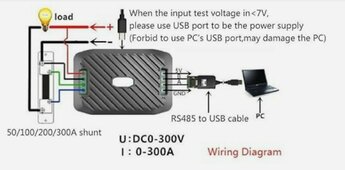So as my inverters soc readings are such poorly defined I'm contemplating building my own shunt as a test for possibly building more for my bigger system can anyone point me towards some reference material as I'm unfamiliar with how the get accurate readings. When I say building my own I mean sticking together a few modules and programming an esp with c++ no PCB design involved I'm just unsure how to turn voltage, current, power and energy readings into an accurate soc
Building my own shunt
- Thread starter ThaiTaffy
- Start date



